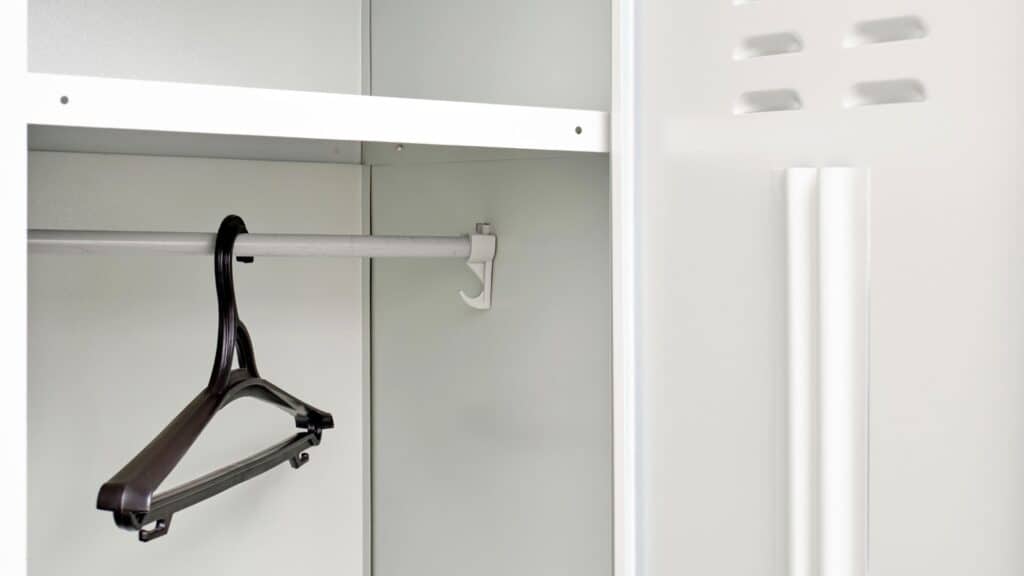Introduction
Every gym or sports centre needs to offer its clients or members a comfortable and safe space to store their valuables and belongings while training. This is where the need for secure, quality lockers in the changing rooms comes into play. What do you put in gym lockers?
Gym lockers are used to store and protect customers’ personal items while performing their physical activities in the sports facility. Security and space are some aspects of choosing the right lockers for your gym. Lockers should have enough space to store bags or backpacks, clothing, and nutritional supplements, among other things. Comfort is an important factor so that clients can train with peace of mind and confidence in knowing their belongings are well protected.
Lockers functionality
The aesthetics and functionality of the lockers also determine the best choice for the gymnasium. The space to be allocated for lockers determines the design and performance of the lockers. You should maximise the area in the changing rooms to provide your facility with the necessary lockers for all your clients.
Okay, you have figured out the number of lockers (compartments) you need, it is time to think about what your clients will put inside them. What are the types of lockers you can find? If your clientele is moving around on bikes, you should consider having some lockers wide enough to fit bike helmets.
When there is no need to provide much space for things, a locker can have several individual compartments with separate locks and doors. The manufacturers call such compartments tiers. That’s why you often hear single-tier, double-tier, triple-tier and so on.
Single or 1-tier means that a locker has only one compartment, door and lock, a double has two, and triple has three and so on. Sometimes it makes sense to mix lockers of different tiers to save space and provide storage solutions at the same time.
A locker cabinet can take different shapes to look more modern and practical. A double-tier, Z-shape locker is a gym’s most common non-standard format. The name originates from the letter Z that doors and walls between compartments form.

Lockers security
Security is another critical aspect when choosing the type of lockers a gym needs. It is also important to determine whether the lockers use padlocks or electronic security systems to check whether they have sufficient batteries or have suffered some kind of deterioration due to rust or dirt. By knowing the profile of the clients in your facility, you can determine the type and value of personal items stored in the lockers. The security technology of the lockers should follow the needs of the centre’s users. The most common option is lockers with padlocks, even if this means that the centre’s users must have a padlock of the appropriate characteristics required by the centre. The option of doors with electronic locks or card readers is the most expensive, but it is the most convenient for users. In some centres, locker cabinets are locked with a key, which is a third alternative for gyms when choosing the type of security system that offers the best performance.
Maintenance
The most resistant lockers are usually made of metallic materials composed of steel sheets and covered with a coat of paint following the style of the centre. The maintenance of the lockers must be optimal. Cleanliness should be an important aspect of your health club. As they are located inside the gym changing rooms, the lockers must meet all the necessary sanitary criteria to ensure that there are no bacteria or infectious agents produced by the humidity generated by the use of the showers and all the possible health threats that may occur, since it is an enclosed space shared by many people. In this sense, the ventilation and air-conditioning system of the centre must be used to avoid any type of humidity and the appearance of fungus that can spread among your clients.
Conclusion
You should consider all these issues when choosing the most suitable lockers for your sports facility and the satisfaction of the centre users. On many occasions, these types of decisions are the reason why many customers return to the gym and should not be taken lightly.
To comment on this article, please proceed to the LinkedIn post.
Disclaimer: The opinions and positions expressed in this publication are those of the authors and collaborators and do not necessarily reflect the views or policies of the professional fitness community.

